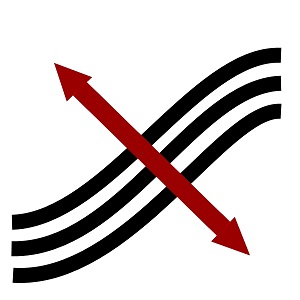Like-Blog
Presenting you the most interesting translation solutions

Why Like-Blog? Now, first of all, this blog is a blog that you should like (and read regularly) – at least, if you are interested in translation. Then, the topic discussed here is one in which the meaningful likeness between a text and its translation in the language pair English-German plays a key role. On this page, I will take a close look at some interesting translation solutions that I have come across in the course of my work as a translator and translation scholar.
A translation solution is only as good as the arguments that support it. This means that any translation criticism, whether positive or negative, needs to be justified. The quality of a translation solution shows only when we compare it to other possible translation solutions in a given translation situation. Therefore, a translation critic should not only say why a translation solution is bad, but also demonstrate what a better solution might look like. I will try to stick to these principles of translation criticism. So if you have any questions regarding my line of argument or if you disagree, please, let me know your opinion by phone at +49 4171 6086525 or by e-mail to bittner@businessenglish-hamburg.de. So much for the introduction. I hope you’ll enjoy reading this blog!
Theme and rheme (December 2021)
“A Shot at Cancer” (Time.com, 3 September 2009) deals with novel methods of fighting cancer. Alice Park writes in this context: “He is tipping the odds further in favor of the anticancer cells by genetically modifying the tumor-fighting T cells so that cancer cells aren’t simply among the ones they recognize but are the only ones they recognize [....].” “He” refers to Dr Steven Rosenberg of the National Cancer Institute in the USA.
This was translated as: “Er setzt auf die Zukunft der Antikrebszellen, indem er die T-Zellen zur Tumorbekämpfung genetisch so modifiziert, dass Krebszellen nicht nur unter denen sind, die sie erkennen, sondern dass sie die einzigen sind, die sie erkennen [....].”
The translation is not necessarily wrong, but it is not as good as it could be. Firstly, rendering “He is tipping the odds further in favor of the anticancer cells” merely as “Er setzt auf die Zukunft der Antikrebszellen” fails to do justice to the more specific meaning of the source compared with the target. After all, this is not just about the future of the anticancer cells; it is about increasing their success rate.
Secondly, there is a syntactic problem that affects both the original and the translation. This problem relates to the theme-rheme structure of the clauses. The translation, it is true, imitates the source syntax as far as possible; yet, this only exacerbates the theme-rheme confusion. While the theme (the T cells) of the first subclause (“indem er ...”) implicitly gives the cancer cells a rheme position, the second subclause (“dass ...”) features the cancer cells as its theme. This shift becomes confusing in the subsequent relative clause, where the cancer cells must be identified as the direct object (The question is: who recognises whom?) and, thus, as the rheme. The translation might be improved as follows: So verbessert er die Erfolgsquote der Antikrebszellen weiter, indem er die T-Zellen zur Tumorbekämpfung genetisch so modifiziert, dass die von ihnen erkannten Zellen nicht nur teilweise sondern ausschließlich Krebszellen sind.
